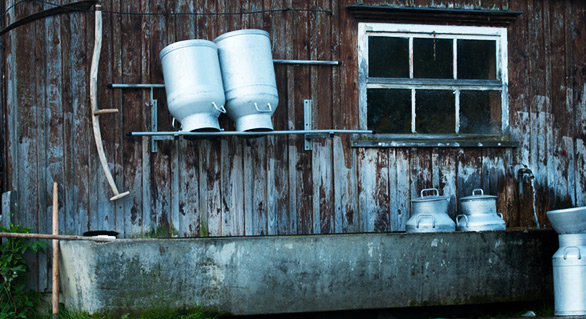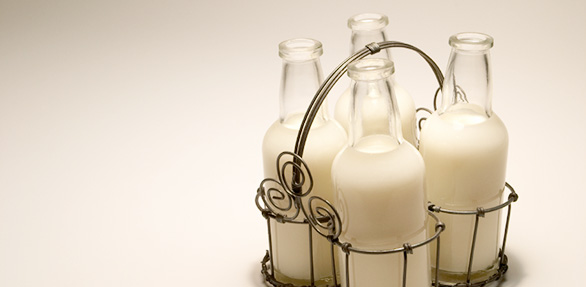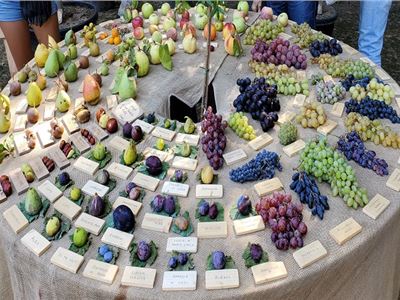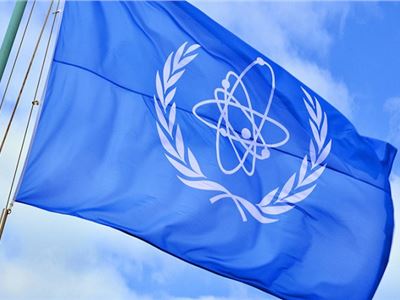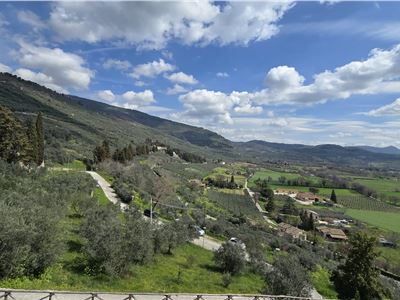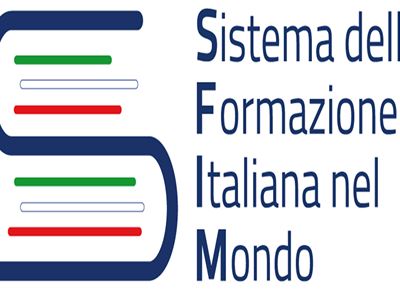After the recent trial of Wisconsin dairy farmer Vernon Hershberger, raw milk is in the political spotlight again: is it healthy? Is it safe? Raw milk advocates insist that pasteurization destroys the nutritional value of milk, while critics fire back with dire statistics about E. Coli and Campylobacter infections.
From an evolutionary perspective, a more fundamental question is whether any kind of dairy, pasteurized or not, is healthy. It definitely wasn’t around in the Paleolithic. Aurochs, the first animals that resembled modern cows, were domesticated in Mesopotamia around the time of the agricultural revolution. But the fact that something didn’t exist in the caveman days doesn’t necessarily prove that it’s unhealthy; it’s just a sign to proceed with caution.
Dairy in general is covered in another article; essentially, it’s a gray area food that has to be an individual decision. Some people can’t digest it at all, or notice that it triggers acne flares. Not everyone has a problem with it, though, and if you tolerate it well, it can add variety and nutrients (especially calcium and high-quality fats) to your diet. And in that case, the raw milk debate is highly relevant.
In This Article:
A Brief History of Milk Processing
Choosing Milk: A Spectrum of Options
Conclusion and Further Reading
A Brief History of Milk Processing
The first records of milk consumption range from 8,000-10,000 years ago in the Fertile Crescent to 6500 BC in Turkey to approximately 5,000 BC in Africa. Some of these cultures ate only fermented dairy products (kefir, yogurt, and cheese); others drank milk directly. In the Americas, dairy arrived much later, with the first waves of European explorers in the 1500s. All these groups were drinking raw, unpasteurized milk. But what they (and the many superbly healthy raw-milk-drinking cultures documented by Dr. Weston A. Price) all had in common was a very short path from the cow to the table.
In the late 1700s, the social and economic changes of the Industrial Revolution stretched that short supply line into a long, tangled, and astonishingly unsanitary trail. As cities grew, milk had to be carted in from the country. Starting off dubiously clean cans, it was brought in on unrefrigerated wagons or train cars (sometimes piled in dirty ice, sometimes with no effort at all to keep it cold), processed in a dairy plant, poured into bottles that may or may not have been cleaned properly, and dropped off on people’s doorsteps in the early morning to sit there until they woke up and went outside to get it. One researcher estimated that milk could sometimes spend up to 48 hours, unrefrigerated, before it reached the consumer.
It would be hard to design a more dangerous distribution system short of pouring E. Coli directly into the milk bottles as they left the plant. Unsurprisingly, milk-borne diseases, including tuberculosis, typhoid, scarlet fever, and diphtheria, were endemic in major industrial areas.
This was the state of the milk industry in 1856, when a French scientist named Louis Pasteur made a scientific breakthrough that would eventually change the entire milk production system. Pasteur discovered that by cooking any food to a certain temperature for a certain time, a process he called pasteurization, he could kill the bacteria in it. Pasteur’s original experiments were done on wine, but in 1886, a German chemist named Franz von Soxhlet recommended purifying milk for baby food by the same method.
Wherever pasteurization was introduced, it showed immediate benefit, especially among infants. Just to give one example, a French researcher named Pierre Budin studied diarrheal illnesses among Parisian babies in the 1890s, and found that breast-fed babies died at a much lower rate than bottle-fed babies, especially during the summer, when it was hardest to keep milk cool. But among babies who received pasteurized cows’ milk at Budin’s clinic, summer mortality was extremely low (in some years, zero). This indicated that the raw milk-fed babies weren’t dying from lack of essential nutrients in breastmilk, but from pathogens in the contaminated cows’ milk they were drinking.
Despite this evidence, pasteurization didn’t become widespread for decades. Many people distrusted it. In fact, the arguments raised at the time sound a lot like those of the raw milk movement today. Some doctors worried that heating the milk would destroy its nutritional value (especially its ability to fight scurvy, which we now know is due to Vitamin C). Other arguments were more economic, claiming that pasteurization would reduce incentives for farmers to produce clean milk or treat their herds well. Some people simply claimed that pasteurized milk was “not natural,” or “dead,” without specifying precisely what they meant.
The critics were vocal, but the infant mortality statistics were louder: in the United States, first Chicago (1909) and then New York City (1914) made pasteurization mandatory. The results were dramatic: New York City’s infant mortality rate dropped from 24% to just over 7% in 7 years. In 1912 book The Milk Question, one doctor summarized the debate: “Theoretically pasteurization should not be necessary. Practically we find it forced upon us” (229).
Pasteurization became a national norm in the United States in the 1920s and 30s. Today, there are several different types:
- Low Temperature, Long Time (LTLT) pasteurization (also called vat or batch pasteurization) is Pasteur’s original method. It requires heating milk to at least 145 degrees Fahrenheit (63 C) for at least 30 minutes.
- High Temperature Short Time (HTST) pasteurization involves a more complicated mechanical process that heats the milk to at least 162 degrees Fahrenheit (72 C) for at least 15 seconds. This is the most commonly used method today.
- Ultra-High Temperature (UHT) pasteurization heats the milk to 280 degrees Fahrenheight (138 C) for at least 2 seconds.
After brushing up on the history and the terminology of the raw milk debate, it’s time to get into the arguments on both sides – were the skeptics justified all along? Or is this one of those rare but important instances where biotechnology is actually in the right?
The Safety Debate: Hygiene
Within the category of food safety, it’s very clear to both sides that raw milk produced under anything but the most sanitary conditions is out. Factory-farmed raw milk would be completely unacceptable to even the most vocal opponents of pasteurization.
Moving on to a product that’s actually debatable (raw milk from pastured, well-treated cows milked in a hygienic environment), the topic gets a little more heated. The dangers of tuberculosis are largely a problem of the past, since herds are now rigorously inspected and vaccinated. Today, the most serious concerns revolve around other pathogens, most importantly E. Coli, Campylobacter, Salmonella, and Listeria.
Reasonably enough, raw milk advocates argue that the food safety problems of the industrial revolution don’t have any bearing on life in the modern world, where milk is kept cold and stored in clean, sterilized containers. Theoretically, milk from healthy cows is almost entirely sterile when it comes out the udder, so as long as it’s handled and stored safely at every point, it shouldn’t be more dangerous than any other food. Proponents of raw milk also claim that the milk has powerful anti-microbial properties that slow or prevent the multiplication of pathogens.
The counterargument from opponents is simple and just as reasonable: cows are not sterile. Perfectly antiseptic conditions are impossible to achieve with any degree of consistency. And even if the entire operation is completely antiseptic, pathogens can still enter the milk from the cow herself, if she has an infection. Since sick cows don’t always look the part, it’s not always possible for the farmer to tell when this is occurring.
The Safety Debate: Statistics
Next up is the numbers debate: what do health and safety statistics actually tell us about raw dairy products? For the most part, they reveal that raw milk is an extremely contentious political issue: there isn’t even agreement on exactly what the numbers are, much less what they mean. To simplify the question a little, it’s possible to divide the “statistics wars” into three major questions:
How many people get sick from drinking raw milk?
About 3% of the US population (approximately 316,000,000) drinks raw milk, so raw milk drinkers number approximately 9,480,000. According to the CDC’s numbers, between 1998 and 2011, 79% of dairy-related illnesses were caused by raw dairy (148 outbreaks total, which caused 2,384 illnesses, 284 hospitalizations, and 2 deaths).
These numbers are disputed by raw milk advocates, who argue that in many cases, illnesses are wrongfully attributed to raw milk. They also criticize the CDC for inflating the statistics with data from a type of homemade cheese called queso fresco that’s often produced under extremely unsanitary conditions, which are more likely responsible for the disease than the milk itself.
How does raw milk compare to pasteurized milk?
To really get a handle on the relative safety of raw milk, it’s important to look at the data from pasteurized milk as well. Using data gathered between from 2000 and 2007, the CDC claims that the risk of raw milk is 150 times higher than the risk of pasteurized milk. But after crunching the numbers for himself, and including a few outbreak reports that the CDC inexplicably left out, Chris Kresser concluded that the real risk is just over 9 times higher for raw milk, not nearly as big of a gap.
What do these statistics mean for me personally?
Above and beyond the question of what the numbers exactly are is the problem of what they actually mean. Raw milk advocates point to the extremely low rates of food contamination from any kind of dairy products (about 1% of all foodborne illness), pointing out that you’re more likely to get sick from spinach, deli meat, or all kinds of other food not regulated as “dangerous.” Since the total risk is so tiny, the slight increase in risk from raw dairy doesn’t mean much. The CDC sees the danger of raw milk, however small, as completely avoidable and therefore an unreasonable risk to run: why would you take the chance?
There are so many aspects of the statistical arguments that it’s impossible to go over them all here. But if you decide to read up on your own, remember to pay close attention to how many years the numbers are from (data sets from 20 or 30 years have more impressive-looking total numbers), who was gathering the information, and what kind of data set they used. Also bear in mind that the vast majority of foodborne illness goes unreported, so even the best statistics we have are really just educated guesses.
The Nutrition Debate: Before you Read the Studies
Before getting into nutritional arguments over raw vs. pasteurized milk, it’s important to be on the lookout for potential confounding factors. There are two big ones:
- All raw milk today is grass-fed, and grass-fed milk is more nutritious than factory-farmed milk, regardless of whether or not it’s been pasteurized. It’s nutritionally, economically, environmentally, and socially better to buy food directly from a farmer instead of supporting industrial agriculture, but these benefits apply to pasteurized grass-fed milk as well; they aren’t exclusive to raw dairy.
- Almost all raw milk is full-fat. This increases absorption of fat-soluble vitamins in the milk, but again, the benefit would also apply to full-fat pasteurized milk.
With that in mind, it’s time to dig into the evidence on both sides.
The Nutrition Debate: Vitamins and Minerals
One argument from the raw-milk side is that pasteurization destroys essential vitamins and minerals naturally found in raw milk. Here’s a list of the nutrients involved, and what each side says about them (Unless otherwise specified, data for the anti-raw-milk side is taken from this meta-analysis of related studies):
- Vitamin C – Different studies have found that between 10 and 50% of the Vitamin C in raw milk is destroyed during pasteurization. This sounds alarming, but it’s a lot less significant if you look at the absolute amount: it’s tiny. Even raw milk doesn’t significantly contribute to dietary Vitamin C, so the decrease is unlikely to affect your total vitamin status for the day.
- B Vitamins – Like Vitamin C, B Vitamins are water-soluble. Conventional nutrition authorities and raw milk activists agree that these vitamins are decreased slightly (approximately 10%, depending on temperature and time) by pasteurization. However, advocates of pasteurization argue that in most cases this is not significant because milk contains such small amounts of B vitamins, with the exception of B12 (also found in many other foods) and B2. Vitamin B2 was the only nutrient that gave the authors of the meta-analysis cause for concern, because milk significantly contributes to many people’s intake.
- Fat-soluble vitamins (A, E, and K) – Some advocates for raw dairy claim that these nutrients are decreased by up to two-thirds by pasteurization. In the meta-analysis, the authors concluded that results were conflicting for Vitamin A (some studies reported an increase and others reported a decrease). Vitamin E was decreased, but since the amount of Vitamin E in milk is nearly insignificant, they argued that it didn’t matter. Whole milk of any kind will increase absorption of these nutrients, but that’s because of the fat content, not the pasteurization.
- Copper – A 1994 study found that copper is very slightly decreased during the pasteurization process. But again, supporters of pasteurization point out that milk hardly contains much copper to begin with.
- Iron – Iron, like copper, is also slightly decreased by pasteurization. But like copper, it’s also not a major factor in milk’s nutritional value.
- Calcium – raw dairy advocates claim that calcium is made insoluble by the heat of the pasteurization process, so it’s less absorbable. The FDA responds that published studies demonstrate no change in the bioavailability of calcium from pasteurized (or homogenized) milk.
The Nutrition Debate: Amino Acids
Another point of contention concerning raw milk is its proteins, or amino acids. Opponents of pasteurization argue that the heat denatures the amino acids in milk, making it much more difficult to digest and destroying some of its health-promoting properties.
Some of these proteins aid in the digestion and absorption of nutrients; for example, lactoferrin helps absorb iron. Others are credited with benefits for the immune system. Supporting this claim, a few epidemiological studies have suggested that raw milk might have be better than pasteurized milk in preventing asthma and allergies, a benefit that the researchers speculated could be due to the whey protein.
Supporters of pasteurization respond that according to all the studies we have, only ultra-high pasteurization temperatures denature these proteins: at best, these arguments are evidence that the most extreme forms of pasteurization slightly diminish the nutritional content of milk (see this chart for specifics).
Enzymes are another class of proteins relevant to the milk debate. Essentially enzymes are necessary for any kind of chemical reaction, including digestion. When milk is heated during pasteurization, the enzymes in the milk are degraded: nobody argues about that. Raw milk drinkers contend that this makes the milk much harder to digest, because your body has to supply all the enzymes for digesting it, rather than getting a hand from the milk itself. On the other hand, the CDC position is that it doesn’t any health difference, because the enzymes in raw cow’s milk aren’t relevant to human digestion anyway.
Another enzyme argument centers on lactose (milk sugar) and lactase (the enzyme needed to digest it). Proponents of raw milk often argue that even lactose-intolerant people can digest it, because bacteria in the raw milk produce lactase. There are plenty of anecdotal reports of lactose-intolerant people who can enjoy raw milk just fine, and a 2010 study from Stanford University was even funded by the Weston A. Price foundation to research the issue. Disappointingly for their sponsors, the researchers found that people with diagnosed lactose intolerance saw no difference at all between the raw and pasteurized versions.
In response, the study’s funders pointed to the small sample size (just 16 people), and noted the study’s efforts to find subjects who were “truly” lactose intolerant might have excluded the very group that sees benefits from raw milk: people who get sick when they consume lactose, but have an issue different from the clinical definition of “lactose intolerance.”
The Nutrition Debate: Probiotics
Getting past the unscientific and unquantifiable claims about “live foods” and “dead foods,” many people feel that raw milk has unique health benefits because of its probiotic content, which allows it to resist (but not entirely prevent) microbial infections. This has already been touched on a little above, in the discussion of bacteria that produce lactose. But the health benefits claimed for raw milk also include the benefits of any other probiotic food: better gut health, a stronger immune system, and easier digestion, among others.
Critics answer that the probiotic benefits of raw milk have never been proven in clinical trials, and that safely collected milk should have very few bacteria at all, since it’s sterile when it leaves the udder. If it’s picked up any bacteria along the way, they would be dangerous pathogens, not beneficial probiotics.
Food Politics
Quite aside from the issue of whether raw milk is good for you or not is the political aspect. Many people feel that everyone has the right to drink whatever they like, free from governmental interference. Even if raw milk is dangerous, why is risking your health with one toxin (trans fats) perfectly legal, while risking your health with a different toxin (E. Coli) is not?
Opponents argue that if raw milk were available everywhere in grocery stores, people might just pick it up off the shelf without a clear understanding of the risks and benefits. As it is, the complicated patchwork of raw milk laws across the United States requires quite a bit of research in most places, so anyone who manages to find a raw dairy producer has at least some understanding of what they’re buying.
Choosing Milk: A Spectrum of Options
If the arguments for raw milk sound convincing to you, your only major decision left is where to get it. But if you’re not quite certain that it’s actually healthy, or if you just want to hedge your bets, there is a middle ground between drinking straight from the cow and lugging home a gallon of whatever’s on sale at Walgreens. Arranged roughly from “most raw” to “least raw,” your compromise options are:
- Buy raw milk and freeze it. Raw dairy farmers seem to be somewhat split on whether freezing raw milk affects its nutritional value, but freezing the milk for 2 weeks before consuming it is one way to reduce the risk of bacterial contamination without heat treatment.
- Buy raw milk and pasteurize it yourself. This allows you to use the most gentle process, low-temperature, long-time (LTLT) pasteurization. Ultra high-temperature pasteurization is popular because it saves money for dairy producers by giving the milk a longer shelf life, not because it fights any common pathogens that can’t be killed by Pasteur’s original method. The lower temperature is gentler and preserves more of the nutrients in the milk.
- Buy LTLT pasteurized, non-homogenized milk. If you aren’t interested in making it yourself, you can get LTLT pasteurized (also called vat-pasteurized or batch-pasteurized) milk from a local farmer, and sometimes even at Whole Foods, depending on where you live. Homogenization is a topic for another article, but it’s another step in milk processing that raw milk advocates criticize as dangerous. Basically, it’s the process of mechanically splitting the milk fat into smaller particles, so the cream doesn’t separate to the top, done mostly for aesthetic reasons and not safety or health. Often, the same small farms that produce LTLT milk don’t homogenize it.
- Buy pasteurized and/or homogenized milk, but always ferment it. One of the arguments for raw milk as opposed to pasteurized is that the raw version contains valuable probiotic bacteria – but you can grow those bacteria just as well in pasteurized milk and be more secure in the knowledge that there isn’t anything dangerous growing along with them.
Of course, in all of these cases, grass-fed milk is superior to grain-fed, and full-fat dairy is more nutritious than skimmed.
Conclusion and Further Reading
The point of this article isn’t to persuade you either to start or to stop drinking any kind of milk. Whether or not you find the potential benefits worth the potential risks is a completely individual choice. The only take-home message here is this: do your research. And do it very carefully. Don’t just look up the evidence you already agree with, even though it’s very tempting (it always feels good to see someone else justifying your opinions). Go find the arguments for the other side, and read them with an open mind, and then decide what position seems most convincing to you. Ultimately, you’ll be much healthier for it, and you might just learn something along the way.
If you want to read more, the most outspoken advocates of raw milk are from the Weston A. Price Foundation. The Campaign for Real Milk, largely supported by WAPF research, makes a passionate case for the safety and nutritional benefits of raw milk.
For the arguments against raw milk, Real Raw Milk Facts is a great site with lots of useful information and several personal stories of parents whose children got very sick from eating raw milk – definitely worth a look even if you love raw milk and never plan to change.
The post All About Raw Milk appeared first on Paleo Diet Lifestyle | Paleo diet Recipes & Tips.
- Tags:
- Categories:



